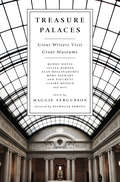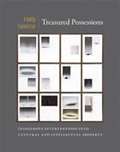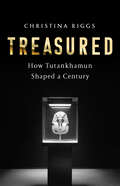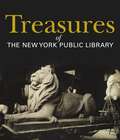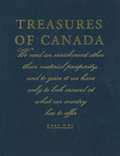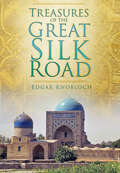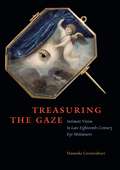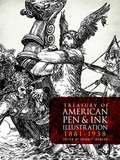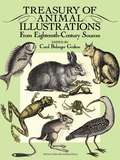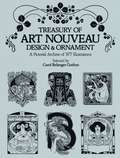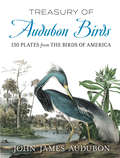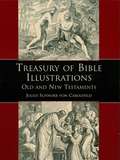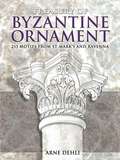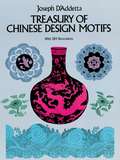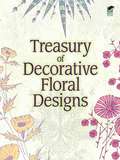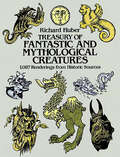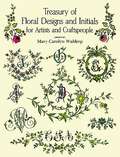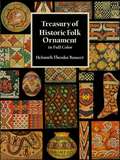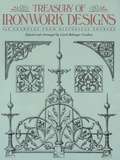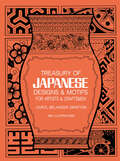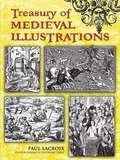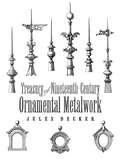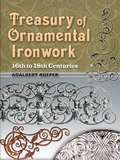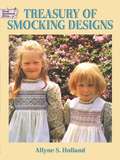- Table View
- List View
Treasure Palaces: Great Writers Visit Great Museums
by The Economist Maggie Fergusson Nicholas SerotaIn this exuberant celebration of the world's museums, great and small, revered writers like Ann Patchett, Julian Barnes, Neil Gaiman, and more tell us about their favorite museums, including the Lower East Side Tenement Museum in New York, the Musée Rodin in Paris, and Tate Modern in London. These essays, collected from the pages of The Economist's Intelligent Life magazine, reveal the special hold that some museums have over us all.In his ode to the Museum of Anthropology in Xalapa, Mexico, the great novelist and essayist Carlos Fuentes writes, "Museums, like lovers, can lose their charms. But the next time can always be the first time.” William Boyd visits the Leopold Museum in Vienna-a shrine to his favorite artist, Egon Schiele, whom Boyd first discovered on a postcard as a University student. In front of her favorite Rodins, Allison Pearson recalls a traumatic episode she suffered at the hands of a schoolteacher following a trip to the Musée in Paris. Neil Gaiman admires the fantastic world depicted in British outsider artist Richard Dadd's "The Fairy Feller's Master-Stroke,” a tiny painting that also decorated the foldout cover of a Queen album, housed in the Victorian room of Tate Britain's Pre-Raphaelite collection. Ann Patchett fondly revisits Harvard University's Museum of Natural History-which she discovered at 19, while in the throes of summer romance with a biology student named Jack.In Search of the Originals is a treasure trove of wonders, a tribute to the diversity and power of the museums, the safe-keepers of our world's most extraordinary artifacts, and an intimate look into the deeply personal reveries we fall into when before great art.
Treasured Possessions: Indigenous Interventions into Cultural and Intellectual Property
by Haidy GeismarWhat happens when ritual practitioners from a small Pacific nation make an intellectual property claim to bungee jumping? When a German company successfully sues to defend its trademark of a Māori name? Or when UNESCO deems ephemeral sand drawings to be "intangible cultural heritage"? In Treasured Possessions, Haidy Geismar examines how global forms of cultural and intellectual property are being redefined by everyday people and policymakers in two markedly different Pacific nations. The New Hebrides, a small archipelago in Melanesia managed jointly by Britain and France until 1980, is now the independent nation-state of Vanuatu, with a population that is more than 95 percent indigenous. New Zealand, by contrast, is a settler state and former British colony that engages with its entangled Polynesian and British heritage through an ethos of "biculturalism" that is meant to involve an indigenous population of just 15 percent. Alternative notions of property, resources, and heritage--informed by distinct national histories--are emerging in both countries. These property claims are advanced in national and international settings, but they emanate from specific communities and cultural landscapes, and they are grounded in an awareness of ancestral power and inheritance. They reveal intellectual and cultural property to be not only legal constructs but also powerful ways of asserting indigenous identities and sovereignties.
Treasured: How Tutankhamun Shaped a Century
by Christina RiggsA bold new history of the discovery of King Tut and the seismic impact it left on modern society. When it was discovered in 1922, in an Egypt newly independent of the British Empire, the 3,300-year-old tomb of Tutankhamun sent shockwaves around the world. The boy-king became a household name overnight and kickstarted an international obsession that continues to this day. From pop culture and politics to tourism and the heritage industry, it&’s impossible to imagine the past century without the discovery of Tutankhamun – yet so much of the story remains untold. In Treasured, Christina Riggs weaves compelling historical analysis with tales of lives touched, or changed forever, by an encounter with the boy-king. Who remembers that Jacqueline Kennedy first welcomed the young pharaoh to America? That a Tutankhamun revival in the 1960s helped save the ancient temples of Egyptian Nubia? Or that the British Museum&’s landmark Tutankhamun exhibition in 1972 remains its most successful ever? But not everything about &‘King Tut&’ glitters: tours of his treasures in the 1970s were linked to Big Oil, his mummified remains have been exploited in the name of science, and accounts of his tomb&’s discovery exclude Egyptian archaeologists. Treasured offers a bold new history of the young pharaoh who has as much to tell us about our world as his own.
Treasures
by New York Public LibraryA lavishly illustrated book to accompany the New York Public Library's exhibition of the priceless treasures in its archivesInside the walls of its three research library buildings, The New York Public Library is a palace of wonders containing diverse collections of over 46 million objects including rare books, maps, paintings, prints, sculpture, photographs, films, recorded sound, furniture, ephemera, rare and important historical documents, and more. In honor of the NYPL’s 125th anniversary, the library is opening its first ever permanent exhibition in the exquisite Gottesman Hall on the first floor of its iconic 42nd Street Building: The Polonsky Exhibition of The New York Public Library’s Treasures. Treasures is the official book to accompany the exhibition: a sumptuous four-color volume that showcases the depth and breadth of the library’s holdings. Filled with the creations of history-makers and influencers who changed the world, Treasures includes such diverse items from NYPL’s collections as the Declaration of Independence written in Thomas Jefferson’s hand; the original Bill of Rights; Charles Dickens’s desk; George Washington’s handwritten farewell address; manuscript material from authors such as Maya Angelou, Charles Dickens, T.S. Eliot, Jack Kerouac, Vladimir Nabokov, Mary Shelley, Virginia Woolf, and many others; a Gutenberg Bible; Malcolm X’s briefcase; the original Winnie-The-Pooh dolls; the only existing letter from Christopher Columbus to King Ferdinand regarding his discovery, and a Sumerian cuneiform tablet ca. 2300 BC. Treasures is The New York Public Library’s gift to the world.
Treasures Of Canada
by Alan Samuel John De VisserThis tome is an extensive record of Canadas treasures including art, architecture, historical sites, and spots of natural beauty.
Treasures of the Great Silk Road
by Edgar KnoblochTurkestan – the great landmass of Central Asia and Western China – is an intriguing meeting point of civilizations. Four major invasions – Greek, Arab, Mongol and Russian – together with Persian, Turkic and Chinese cultural influences, have made their mark on this vast and sometime forbidding region. The Great Silk Road ran to the West through it, while nomad and urban peoples combined over the centuries to produce a cultural flowering under Timur and his successors in the late medieval and early modern periods, through a rich profusion of artistic and architectural styles and ornament. In this comprehensive account of the culture and history of Central Asia, Edgar Knobloch describes the main centres of our human civilization. He spices the text with quotations from the works of contemporary travellers, while providing an expert’s commentary on the archaeological, architectural and decorative features of the sites he describes. The stunning and evocative photographs are supplemented by numerous maps, incorporating the recent developments in the region’s borders and frontiers. With up-to-date information on borders, check points and visas, Treasures of the Great Silk Road should appeal not only to scholars and those interested in the great cultural heritage of this region, but also to travellers to the region.
Treasuring the Gaze: Intimate Vision in Late Eighteenth-Century Eye Miniatures
by Hanneke GrootenboerThe end of the eighteenth century saw the start of a new craze in Europe: tiny portraits of single eyes that were exchanged by lovers or family members. Worn as brooches or pendants, these minuscule eyes served the same emotional need as more conventional mementoes, such as lockets containing a coil of a loved one’s hair. The fashion lasted only a few decades, and by the early 1800s eye miniatures had faded into oblivion. Unearthing these portraits in Treasuring the Gaze, Hanneke Grootenboer proposes that the rage for eye miniatures—and their abrupt disappearance—reveals a knot in the unfolding of the history of vision. Drawing on Alois Riegl, Jean-Luc Nancy, Marcia Pointon, Melanie Klein, and others, Grootenboer unravels this knot, discovering previously unseen patterns of looking and strategies for showing. She shows that eye miniatures portray the subject’s gaze rather than his or her eye, making the recipient of the keepsake an exclusive beholder who is perpetually watched. These treasured portraits always return the looks they receive and, as such, they create a reciprocal mode of viewing that Grootenboer calls intimate vision. Recounting stories about eye miniatures—including the role one played in the scandalous affair of Mrs. Fitzherbert and the Prince of Wales, a portrait of the mesmerizing eye of Lord Byron, and the loss and longing incorporated in crying eye miniatures—Grootenboer shows that intimate vision brings the gaze of another deep into the heart of private experience. With a host of fascinating imagery from this eccentric and mostly forgotten yet deeply private keepsake, Treasuring the Gaze provides new insights into the art of miniature painting and the genre of portraiture.
Treasury of American Pen & Ink Illustration 1881-1938 (Dover Fine Art, History of Art)
by Fridolf Johnson"Looking for a good book? Treasury of American Pen & Ink Illustration 1881-1938 is a coffee-table-style book of outstanding black and white art that is magnificent to look through and should be in every art lover's home." -- Rushford Public LibraryA combination of technological advances and a vast reservoir of native talent led to a golden age in American illustration during the period between the Gilded Age and the dawn of World War II. Popular magazines such as Century, Scribner's, Puck, and Life launched the careers of many aspiring illustrators, including Edwin Austin Abbey, Howard Pyle, Maxfield Parrish, Frederic Remington, Charles Dana Gibson, Rockwell Kent, and many others. This collection features more than 230 reproductions of the finest pen-and-ink drawings by more than 100 artists during the heyday of the illustrated magazine, from 1881 to 1938. In addition to images from popular magazines, the survey features illustrations from newspapers and books that recapture a broad range of expressions of artistic imagination and experimentation. The compilation includes an informative Introduction by designer and art historian Fridolf Johnson, which traces the history and development of pen-and-ink illustration and chronicles America's richly varied illustrative tradition and artistic heritage.
Treasury of Animal Illustrations: From Eighteenth-Century Sources
by Carol Belanger GraftonWondrous panorama of the animal kingdom, with detailed reproductions of over 600 rare engravings: mammals, birds, reptiles, amphibians, fish, crustaceans, insects, some plants -- all identified. Royalty-free illustrations for designers and craftspeople. Excellent sourcebook for students of natural history.
Treasury of Art Nouveau Design & Ornament (Dover Pictorial Archive)
by Carol Belanger GraftonOrnament is the essence of Art Nouveau. Throughout their two decades of dominance, Art Nouveau artists concentrated on the ornamental and decorative potential of the flowing line in painting, printing, wallpaper, and all other fine and applied arts. Hundreds of thousands of carefully wrought designs embellished books, bookplates, furniture, and appliances. A fashionable home was a garden of graphic florals, petals, leaves, and stems.Today, Art Nouveau is again attracting artists, designers, and craftsmen of all kinds, while these countless ornamental flourishes have perished with their ephemeral surroundings. Art Nouveau motif seekers have been left with little choice but to resort to expensive archives of rare books. Here, taken directly from those rare books and periodicals, are 577 royalty-free authentic period designs specially chosen for artists and designers. The ornaments range in size from full-page illustrations to borders, head and tailpieces and decorative initials. All are in black-and-white line, clearly reproduced.Many of the creations come from the influential English periodical The Studio (1894–1920) and the French Art el Décoration (1897–1910); others from a variety of original European sources, all identified. Artists represented include Gustav Klimt, George Auriol, Ethel Larcombe, and Will Bradley, along with hundreds of English. French, Italian, German, Scandinavian, and American studio draftsmen, all identified when possible. The designs are grouped by subject matter: florals, landscapes, figures, etc. There are spot illustrations, bookplates, menus, title pages, and many, many swirling line forms.
Treasury of Audubon Birds: 130 Plates from The Birds of America
by John James AudubonThe most famous work by America's premier ornithological artist, The Birds of America presented 435 large, hand-colored engravings depicting more than 1,000 birds of 489 species. John James Audubon's historic volume, completed in 1838, was succeeded by the smaller lithographic illustrations of the much more affordable yet highly collectible octavo edition. This new collection contains 130 select plates from the octavo version, featuring splendid, scrupulously accurate portraits of the snowy egret, wild turkey, brown pelican, screech owl, and more. The birds are identified by both the common names used by Audubon and their modern equivalents. The culmination of the nature illustrator's career, these stunning works offer realistic portrayals of American birds in elegantly spare settings. An informative Introduction outlines the artist's life and his work and provides background on the creation of the octavo edition.
Treasury of Bible Illustrations: Old and New Testaments (Dover Pictorial Archive)
by Julius Schnorr von CarolsfeldPainstakingly reproduced from a rare volume of German engravings, this splendid work comprises all of the Bible's best-loved, most-quoted stories. Imaginative illustrations depict 105 episodes from the Old Testament and 74 scenes from the New Testament, accompanied by a citation of chapter and verse and the King James Version of the text.
Treasury of Byzantine Ornament: 255 Motifs from St. Mark's and Ravenna
by Arne DehliThe art of the Eastern Roman Empire and of its capital, Byzantium (Constantinople), found expression throughout the ancient world, particularly in Italian architecture. This superb archive of Byzantine ornament contains a wealth of decorative architectural elements derived from sixth- and seventh-century Italian buildings in Ravenna and in the Venetian church of St. Mark's.Depicted in more than 250 delicate line drawings are splendid perforated marble panels, intricately fashioned stone grilles and cornices, lavish candle brackets, elaborate stone mosaics for floors and ceilings, bronze window guards, as well as an abundance of decorative wreaths, rosettes, mouldings, and medallions.A multipurpose reference for students, artists, and designers, this archive of sumptuous, royalty-free designs will also serve as a rich source of inspiration for anyone working in the fine or applied arts.
Treasury of Chinese Design Motifs (Dover Pictorial Archive)
by Joseph D'Addetta284 Chinese motifs -- flowers and plants, animal life, and more. 100 plates.
Treasury of Decorative Floral Designs (Dover Pictorial Archive)
by DoverThe timeless beauty of elegant floral designs has made them prime favorites among artists and craftspeople. This rich harvest of blossoms, vines, and other floral decorations has an unlimited variety of applications, allowing them to serve equally well as individual motifs or as running borders.More than 300 delicately rendered motifs, all reproduced from a rare nineteenth-century catalog, feature a profusion of sprays, branches, and clusters. Commercial artists and designers will want them for projects calling for floral centerpieces, stripes, and allover patterns. Craftworkers will find the designs suitable for embroidery, textile patterns, woodworking, and other crafts.
Treasury of Fantastic and Mythological Creatures: 1,087 Renderings from Historic Sources (Dover Pictorial Archive)
by Richard HuberDrawing on fifty centuries of human history, this encyclopedic collection of images is filled with demons, monsters, animal-gods, totemic figures, and other supernatural beasts from the darker realms of man's imagination. Works range from prehistoric rock paintings to the drawings of Max Ernst, from the masks of black Africa to the gargoyles of Notre Dame.
Treasury of Floral Designs and Initials for Artists and Craftspeople (Dover Pictorial Archive)
by Mary Carolyn WaldrepYou'll find a thousand different uses for this practical archive of royalty-free designs with a floral theme. It includes over 700 wonderfully graceful and imaginative designs featuring flowers, leaves, and vines in delicate interlacements. Most incorporate elaborately embellished letters, initials, monograms, and names.Needleworkers, fabric painters, and other craftworkers will love browsing through these pages for the perfect design to personalize towels, handkerchiefs, bed linens, clothing, and more. Textile designers, graphic artists, and calligraphers will also find the volume brimming with useful ideas and models for creating rich floral designs, illustrated letters, borders, and frames.
Treasury of Flower Designs for Artists, Embroiderers and Craftsmen
by Susan GaberA hundred garden favorites rendered in black-and-white line illustrations will suggest numerous design and artistic uses to artists, designers, craftsmen, needleworkers. Amaryllis, anemone, begonia, cinquefoil, peony, snapdragon flow and weave, many forming borders and frames. All drawings royalty-free.
Treasury of Historic Folk Ornament in Full Color
by Helmuth Theodor BossertRich collection of attractive, highly usable folk motifs spans broad range of historical periods and cultures -- from ancient Egypt to early 20th-century Japan. Over 700 designs, brimming with native imagination and invention, include examples of decorative artwork derived from textiles, pottery, clothing, masks, tapestries, and other original sources. All royalty-free.
Treasury of Ironwork Designs: 469 Examples from Historical Sources (Dover Pictorial Archive)
by Carol Belanger GraftonThe history of Western decorative arts is filled with splendid examples of ornamental ironwork — elaborately wrought designs for gates and fences, finials and posts, banisters, window grilles, signs and marquees, cathedral screens, and a host of other architectural and decorative features. This practical archive brings together nearly 500 outstanding examples of the ironmaker's art. Meticulously rendered in fine black-and-white line art, the designs have been reprinted from rare European and American catalogs and periodicals of the nineteenth and early twentieth centuries, including L'Art Pour Tous, Art Journal, The Illustrated London News, Harper's Monthly, and others.The designs illustrated here date from the Middle Ages through the nineteenth century, encompassing the ornate figuration of the Renaissance, the exuberant innovations of Baroque and Rococo artists, and the sinuous designs of nineteenth-century ironworkers inspired by the Art Nouveau aesthetic. Artists, architects, designers, and craftspersons will find this volume an ideal sourcebook of beautiful designs — all royalty-free — from a great tradition in the decorative arts.
Treasury of Japanese Designs and Motifs for Artists and Craftsmen (Dover Pictorial Archive)
by Carol Belanger GraftonA profound sense of the aesthetic beauty in all things pervades the whole of Japanese culture, finding perhaps its clearest expression in the decorative, applied, and pictorial arts. Characterized by a mastery of line and composition, and noted for lyrical scenes of exquisite beauty, the genius of Japanese art has bequeathed to the world a remarkable and distinctive design legacy. This exceptionally versatile collection of traditional Japanese designs and motifs presents the working artist with a treasury of 360 copyright-free designs. All have been especially adapted by noted artist Carol Belanger Grafton for ready use by illustrators, designers, and craftspeople. Painstaking effort has been made to preserve the original spirit and subtlety of detail while simultaneously sharpening the lines and enhancing the reproducibility of the designs and motifs. There are several lovely ceramic and textile patterns. However, most of the design motifs in this compendium were taken from woodblock prints. This particular medium was invented in China and introduced to Japan before 1000 A.D., flourishing thereafter and reaching its zenith in the Ukiyo-e ("floating world") school of the 17th, 18th, and 19th centuries. Accompanying these depictions of people in traditional garb, and accessories such as fans, keys, kites, and umbrellas, are many charmingly decorative family crests arranged in mostly circular configurations. Also included are full-page compositions of bold geometric design, vignettes of ethereal delicacy, as well as a generous sampling of nature's bounty: cherries, radishes, plum blossoms, lions, elephants, dogs, cranes, parrots, turtles, butterflies, even demons and dragons, and much more―often in several arrangements, many with reversed images.Artists, designers, illustrators, students, and teachers will find this indispensable collection of 360 traditional Japanese designs and motifs rendered in clean, crisp, black-and-white, copyright-free illustrations to be a remarkably fertile source of illustrative inspiration and design solutions.
Treasury of Medieval Illustrations (Dover Pictorial Archive)
by Carol Belanger Grafton Paul LacroixA Rich Archive of Medieval Vignettes From Authentic Pages of HistoryIn this artful look back at the fascinating facets of medieval society, the realms and reveries of the Middle Ages unfold in more than 750 black-and-white illustrations. Crisp depictions of battling warriors, everyday business and industry, architectural motifs, religious and secular celebrations, calligraphy, beasts of myth and legend, and other elements of daily medieval life and beliefs abound. Masterfully reproduced from rare sources, these genuine images were created by artists throughout medieval Europe. Ideal for use in a broad spectrum of graphic and craft projects, this treasury of illustrations will also delight students and enthusiasts of history.
Treasury of Nineteenth-Century Ornamental Metalwork
by Jules DeckerExtremely pliable yet amazingly durable, metal offers infinite decorative options. Here are 1,000 prime examples of French metal masterworks, painstakingly reproduced from an extremely rare and valuable edition. From the everyday to the ornate, items include:Weather vanesTilesWaterspoutsTrimsBasinsPike headsYou'll also find hundreds of other images, offering a wealth of inspiration and useful historical designs.
Treasury of Ornamental Ironwork: 16th to 18th Centuries
by Adalbert RoeperSixty vintage black-and-white plates illustrate the history of German decorative ironwork from the16th to the 18th centuries. A hard-to-find celebration of the diversity and enduring beauty of Germany's handcrafted iron embellishments, this magnificent edition exhibits striking views of metal doors, balconies, window arches, gates, corner pieces, decorative accessories, and more, many wrought with gargoyles, human figures, and florals. A rich source of inspiration and an accurate, invaluable reference for art historians, architects, craftworkers, and designers.
Treasury of Smocking Designs
by Allyne S. HollandSmocking, the venerable English peasant craft dating from the late eighteenth century, was a needle technique originally used to adorn the traditional rural work chemise. Today's needleworkers will welcome this collection of 22 beautiful smocking patterns by noted designer Allyne Holland, as well as an informative discussion of smocking traditions, materials, fabric preparation, stitching techniques, and all the finishing touches.Make an exquisite yoke or a pocket for a favorite blouse, ornament pillows and evening bags, embellish children's clothing with baskets or butterflies, and create countless other special items using the charming patterns provided. Ranging in difficulty from intermediate to advanced, the patterns divide into four basic groups: Geometric Smocking, Cross-Over Combinations, popular Picture Smocking, and Advanced Designs. Choose from "Victorian Memories," "Katie's Best," "Magic," "Rosina's Garden," "Madeira Lace," and many other beautiful designs.A valuable section on stitching techniques presents clear step-by-step instructions and helpful diagrams for dozens of straight stitches, wave stitches, stitch combinations, and decorative or accent embroidery stitches -- including cable stitch, honeycomb stitch, trellis stitch, satin stitch, lazy daisy stitch, and many more. In addition, you'll find easy-to-follow smocking graphs for each design, stitch keys, and a useful glossary of smocking terms.
